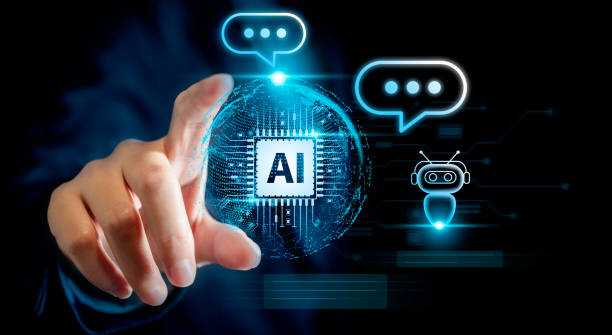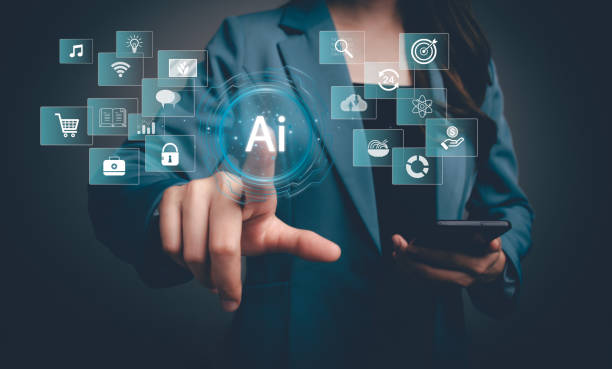What is an AI Robot and How Does it Work?
![]()
An AI Robot is actually a combination of two distinct fields: robotics and artificial intelligence. Robotics deals with the construction and design of physical machines capable of performing various tasks, while artificial intelligence is dedicated to the development of intelligent computer systems that can learn, reason, and make decisions. When these two fields are combined, the result is an intelligent robot that can interact with its environment, process information, and make informed decisions based on it. These robots use complex #Machine_Learning and #Neural_Network algorithms to understand and respond to environmental stimuli. To better understand this, it is better to first learn a little about each of these two fields. Artificial intelligence gives machines the ability to perform tasks that typically require human intelligence, such as understanding natural language, recognizing patterns, making decisions, and solving problems. Robots, using this artificial intelligence, can perform more complex tasks and interact with their environment more effectively. [For more information on artificial intelligence, refer to this link](https://fa.wikipedia.org/wiki/%D9%87%D9%88%D8%B4_%D9%85%D8%B5%D9%86%D9%88%D8%B9%DB%8C).
An AI robot is equipped with various sensors such as cameras, microphones, and tactile sensors, which allow it to collect information from its surroundings. This information is then processed by AI algorithms so that the robot can understand its environment and make appropriate decisions. For example, an AI robot can use its camera to detect various objects and its microphone to understand voice commands. Then, using AI algorithms, the robot can decide how to respond to these stimuli. The AI robot also has the ability to learn. Over time and with experience, the robot can improve its performance and make better decisions. This is especially important in dynamic and unpredictable environments. [For more information on robotics, refer to this link](https://fa.wikipedia.org/wiki/%D8%B1%D8%A8%D8%A7%D8%AA%DB%8C%DA%A9). Ultimately, an AI robot is a powerful tool that can be used in various fields. These fields include industry, medicine, education, and services. AI robots have the potential to make our lives easier and more efficient.
Does your current corporate website present a worthy image of your brand and attract new customers?
If not, transform this challenge into an opportunity with Rasaweb’s professional corporate website design services.
✅ Significantly improves your brand’s credibility and image.
✅ Paves the way for attracting leads and new customers.
⚡ For free and specialized consultation, contact Rasaweb now!
Diverse Applications of AI Robots in Today’s World

The applications of AI robots are vast and diverse, affecting almost every industry. In manufacturing, AI robots are used to automate repetitive and dangerous tasks such as welding, painting, and assembling parts. This not only increases productivity but also improves employee safety. In the #medical field, AI robots are used to perform complex surgeries, diagnose diseases, and provide remote healthcare. These robots can operate with higher precision and speed than humans, assisting doctors in diagnosing and treating illnesses. [For more information on the applications of AI in medicine, refer to this link](https://www.example.com/ai-in-healthcare).
In customer service, AI robots are used as virtual assistants to answer customer questions, provide technical support, and perform simple tasks. These robots can be available 24/7, helping customers anytime and anywhere. In education, AI robots are used to provide personalized learning, evaluate student performance, and give feedback. These robots can help students learn at their own pace and achieve their educational goals. AI robots also have numerous applications in agriculture. These robots can be used for automated irrigation, spraying, and harvesting crops. This not only increases productivity but also optimizes the use of natural resources. Finally, AI robots are also used in security. These robots can be used to monitor dangerous areas, identify security threats, and respond to incidents. These robots can help maintain community safety. Given the increasing advancements in AI and robotics, it is expected that the applications of AI robots will become even more widespread and diverse in the future.
Advantages of Using AI Robots
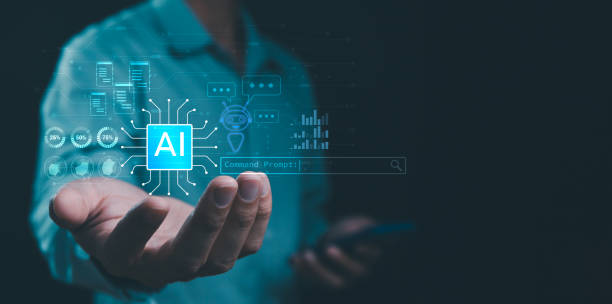
The use of AI robots offers numerous advantages, including increased productivity, which is one of the most important benefits. These robots can work 24/7 without fatigue and perform tasks with higher speed and accuracy than humans. Cost reduction is another significant advantage of using AI robots. These robots can reduce labor, energy, and raw material costs. Increased safety is also among the benefits of AI robots. They can perform dangerous tasks without endangering human lives. Improved quality is another advantage. These robots can perform tasks with higher precision and consistency than humans. Providing better customer service is also a benefit. These robots can be available 24/7, assisting customers anytime and anywhere. Additionally, AI robots can help improve decision-making processes. By analyzing data and providing accurate information, these robots can help managers make more informed decisions. [For more information on the benefits of AI robots, refer to this source](https://www.example.com/benefits-of-ai-robots).
Ultimately, the use of AI robots can contribute to innovation and the development of new technologies. These robots can be used as tools for research and development in various fields. As a transformative technology, AI robots have the potential to revolutionize various industries and improve our lives. Among these applications is the use of AI robots in supply chain management. These robots can help reduce costs and improve efficiency by predicting demand and optimizing transportation routes. Also, in the financial sector, AI robots can be used for fraud detection, risk management, and providing financial advisory services. In the energy sector, AI robots can be used to optimize energy consumption, predict equipment failures, and manage power grids. Given the high potential of AI robots, investing in this technology can help create a competitive advantage and economic growth.
| Advantages | Description |
|---|---|
| Increased Productivity | 24/7 work without fatigue |
| Cost Reduction | Reduced human resources, energy, and raw materials |
| Increased Safety | Performing dangerous tasks without endangering human lives |
| Improved Quality | Higher precision and consistency |
Challenges Ahead in the Development and Use of AI Robots
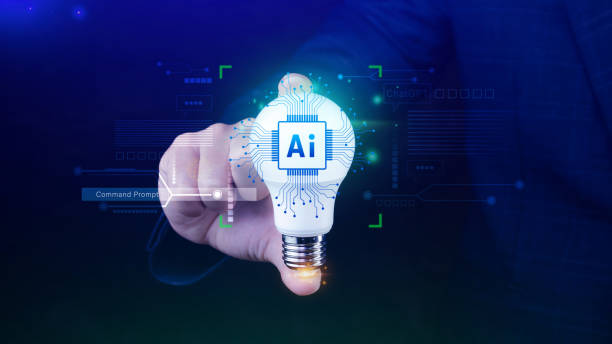
Despite numerous advantages, the development and use of AI robots face several challenges. One of the most significant challenges is the high cost of research, development, and deployment of these robots. AI robots require complex and expensive hardware and software, and their development and maintenance demand high levels of expertise and knowledge. Another challenge relates to security and privacy concerns. AI robots can collect and process sensitive information, and if not properly protected, this information could be misused. [For more information on AI security, refer to this link](https://www.example.com/ai-security).
The next challenge involves concerns about the social and economic impacts of using AI robots. Some individuals worry that robots could replace human jobs, leading to increased unemployment. Another challenge is the ethical issues related to AI robot decision-making. How should robots make decisions in complex and unethical situations? Who will be responsible for the robots’ incorrect decisions? Finally, another challenge is the shortage of skilled professionals in the fields of artificial intelligence and robotics. The development and use of AI robots require specialized and trained individuals. To address these challenges, governments, companies, and universities must collaborate to prioritize investment in research and development, establish appropriate regulations, and train skilled personnel. Additionally, public concerns about the social and economic effects of using AI robots must be considered, and solutions to mitigate these impacts should be provided. The use of AI robots can offer many opportunities to improve our lives, but to fully exploit these opportunities, we must also seriously address the challenges ahead. AI robots are a new phenomenon and are continuously developing and evolving.
Disappointed with your e-commerce website’s low conversion rate? Rasaweb transforms your online store into a powerful tool for attracting and converting customers!
✅ Significantly increase visitor-to-buyer conversion rates
✅ Provide an exceptional user experience to boost customer satisfaction and loyalty⚡ Get free consultation from Rasaweb!
What Will Be the Future of AI Robots?
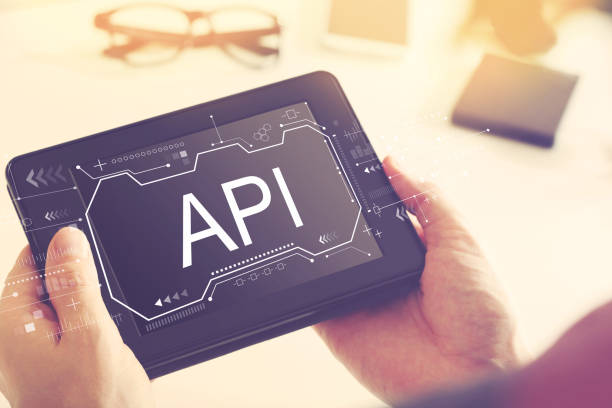
The future of AI robots appears very bright and promising. With the continuous advancement of artificial intelligence and robotics, intelligent robots are expected to play a more prominent role in various aspects of our lives. In the future, robots will be able to perform more complex tasks autonomously, interact more naturally with humans, and operate in unpredictable environments. One area where AI robots are expected to bring about a revolution is transportation. Self-driving cars, delivery drones, and intelligent traffic management systems are just a few examples of the potential applications of AI robots in this field. [For more information on self-driving cars, refer to this link](https://fa.wikipedia.org/wiki/%D8%AE%D9%88%D8%AF%D8%B1%D9%88%DB%8C_%D8%AE%D9%88%D8%AF%DA%AF%D8%B1%D8%AF%D8%A7%D9%86).
In the health sector, AI robots can assist doctors in diagnosing diseases, performing complex surgeries, and providing remote healthcare. Nurse robots, surgeon robots, and intelligent disease diagnosis systems are just a few examples of the potential applications of AI robots in this area. In education, AI robots can help students learn, teachers teach, and administrators manage schools. Personalized learning systems, teacher robots, and intelligent school management systems are just a few examples of the potential applications of AI robots in this area. Finally, in customer service, AI robots can help companies provide better services, faster responses, and reduced costs. Intelligent chatbots, virtual assistants, and intelligent customer support systems are just a few examples of the potential applications of AI robots in this area. However, to achieve this bright future, we must also seriously address the challenges facing the development and use of AI robots. We must ensure that AI robots are used safely, ethically, and responsibly, benefiting all members of society. AI is rapidly advancing and has the potential to transform our lives.
Important Considerations in Choosing and Implementing AI Robots
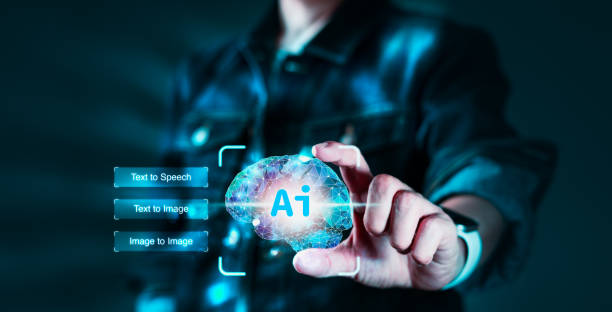
Choosing and implementing an AI robot is a complex process that requires careful planning and consideration of various factors. First and foremost, you must accurately identify your needs. What tasks do you want to assign to the AI robot? What goals do you want to achieve using the AI robot? After identifying your needs, you must choose the appropriate robot. AI robots come in various types, and each is designed for specific applications. You should select a robot that is compatible with your needs and can effectively perform your desired tasks. [To compare different AI robots, refer to this link](https://www.example.com/compare-ai-robots).
After selecting the robot, you must provide the necessary infrastructure for its implementation. An AI robot requires appropriate hardware, software, and network connectivity. You must ensure that your infrastructure is compatible with the chosen robot and can guarantee its optimal performance. After providing the infrastructure, you must train the robot. An AI robot needs to be trained to perform your desired tasks. You can train the robot using existing data or seek assistance from an AI specialist for robot training. After training the robot, you must continuously evaluate its performance. Evaluating the robot’s performance helps you identify its strengths and weaknesses and, if necessary, make changes to the robot’s training or settings. Finally, you must ensure the robot’s security. An AI robot can collect and process sensitive information, and if not properly protected, this information could be misused. You must implement appropriate security measures to protect the robot and its data. By following these tips, you can effectively choose and implement an AI robot and reap its benefits. Using an AI robot can help improve efficiency, reduce costs, and increase customer satisfaction.
Key Differences Between AI Robots and Traditional Automation
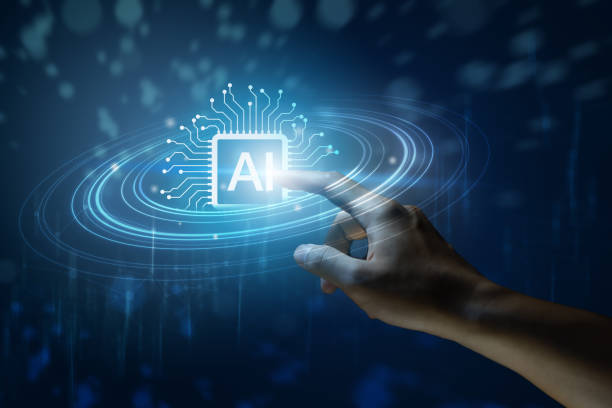
Both AI robots and traditional automation help automate tasks, but there are key differences between them. Traditional automation typically operates based on predefined rules and procedures. These systems are designed to perform repetitive and predictable tasks and cannot automatically adapt to environmental changes. AI robots, unlike traditional automation, use machine learning algorithms to learn from data and improve their performance. These robots can automatically adapt to environmental changes and perform more complex tasks. Another key difference between AI robots and traditional automation is their ability to make decisions. Traditional automation usually cannot make complex decisions and requires human intervention. AI robots, using artificial intelligence algorithms, can make complex decisions and operate independently. [For more information on the differences between AI and automation, refer to this link](https://www.example.com/ai-vs-automation).
Another difference is adaptability. Traditional automation systems are usually designed for a specific task and cannot be easily used for other tasks. AI robots, due to their learning and adaptability capabilities, can be used to perform various tasks. Finally, another difference is the level of interaction with humans. Traditional automation systems typically have limited interaction with humans. AI robots, using natural user interfaces, can interact more effectively with humans and respond to their needs. In summary, AI robots are more flexible, intelligent, and adaptable than traditional automation systems. These robots can perform more complex tasks and help improve efficiency and innovation in organizations. Using AI robots can bring many benefits to organizations, but the choice between AI robots and traditional automation depends on the specific needs and goals of the organization.
Ethical Issues Surrounding AI Robots and Solutions to Address Them
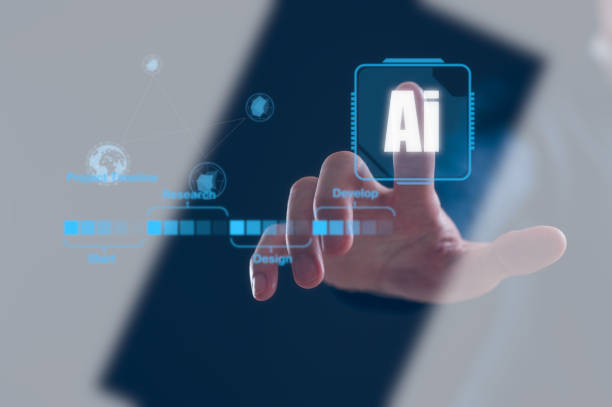
The development and use of AI robots bring with them important ethical issues that must be addressed. One of the most significant ethical concerns is accountability. If an AI robot makes a mistake and causes harm, who will be responsible? The robot’s manufacturer, the robot’s user, or the robot itself? Another issue is privacy. AI robots can collect and process sensitive information, and if not properly protected, this information could be misused. [For more information on AI ethics, refer to this link](https://fa.wikipedia.org/wiki/%D8%A7%D8%AE%D9%84%D8%A7%D9%82_%D9%87%D9%88%D8%B4_%D9%85%D8%B5%D9%86%D9%88%D8%B9%DB%8C).
Another issue is discrimination. If AI algorithms are trained on incomplete or biased data, they may make discriminatory decisions. For example, an intelligent recruitment system might unintentionally prefer men over women. Another issue is transparency. How can we ensure that AI robot decisions are explainable and understandable? If we cannot understand how robots make decisions, we cannot trust them. To address these ethical issues, appropriate ethical and legal frameworks must be developed. These frameworks should ensure accountability, privacy, non-discrimination, and transparency in the development and use of AI robots. Additionally, ethical training should be provided to developers and users of AI robots so that they are familiar with relevant ethical issues and can make responsible decisions. Finally, continuous monitoring and evaluation of AI robot performance must be carried out to ensure adherence to ethical principles. Given the importance of ethical issues related to AI robots, these issues must be seriously considered, and appropriate solutions to address them must be provided. This will help us benefit from AI robots and prevent their potential risks.
| Ethical Issue | Solution |
|---|---|
| Accountability | Developing legal frameworks |
| Privacy | Data protection |
| Discrimination | Training algorithms with fair data |
| Transparency | Robot decisions being explainable |
Are you tired of losing business opportunities due to not having a professional corporate website?
Rasaweb, with its professional corporate website design, helps you:
✅ Build a powerful and trustworthy image for your brand
✅ Convert website visitors into loyal customers
⚡ Get free consultation now!
The Impact of AI Robots on the Job Market and Future Occupations

AI robots will have a significant impact on the job market and future occupations. On one hand, robots can replace some repetitive and low-skilled jobs, leading to increased unemployment. On the other hand, robots can also create new job opportunities. Jobs requiring problem-solving skills, creativity, critical thinking, and social interaction are less at risk of being replaced by robots. In fact, robots can assist humans in these tasks and increase their productivity. [For more information on the impact of AI on the job market, refer to this link](https://www.example.com/ai-and-the-future-of-work).
Some of the new jobs expected to be created in the future include AI specialists, robotics engineers, data analysts, cybersecurity specialists, and change managers. To prepare for the future job market, we need to upgrade our skills and learn new ones. Continuous education, gaining experience in new fields, and developing soft skills are among the strategies that can help us in this regard. Also, we need to change our attitude towards work and get used to learning and adapting to continuous changes in the job market. AI robots have the potential to revolutionize the global economy, but to fully exploit this potential, we must also address the challenges ahead and provide appropriate solutions to tackle them. AI robots create new opportunities and challenges for the job market.
How to Build an AI Robot? (Step-by-Step Guide)
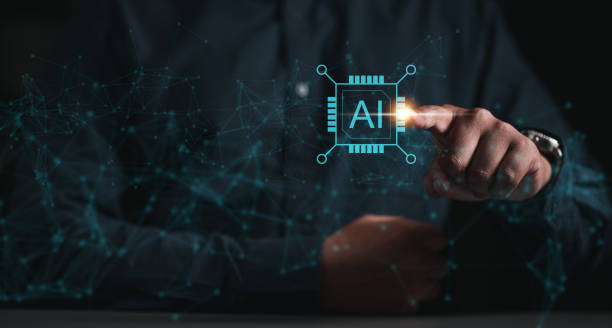
Building an AI robot can be an exciting and challenging project. To begin, you need basic knowledge in robotics, electronics, and programming. You also need to acquire the appropriate tools and equipment. The first step is to choose a robotics platform. A robotics platform provides the robot’s skeleton and mechanical components. You can use ready-made platforms or design and build your own. The second step is to select sensors and actuators. Sensors help the robot understand its surroundings, and actuators help the robot interact with the environment. You should choose sensors and actuators that are compatible with your project’s needs. The third step is to choose a microcontroller. The microcontroller is the robot’s brain and is responsible for controlling the sensors, actuators, and other components of the robot. You must select a microcontroller with sufficient processing power to execute AI algorithms. [For more information on microcontrollers, refer to this link](https://fa.wikipedia.org/wiki/%D9%85%DB%8C%DA%A9%D8%B1%D9%88%DA%A9%D9%86%D8%AA%D8%B1%D9%84%D8%B1).
The fourth step is programming the robot. You need to write a program for the microcontroller that reads sensors, processes data, and controls actuators. You can use various programming languages such as C++, Python, and Java. The fifth step is training the robot. If you want your robot to exhibit intelligent behaviors, you must train it. You can use machine learning algorithms to train the robot. The sixth step is testing and evaluating the robot. After building and training the robot, you need to test and evaluate its performance. If the robot is not working correctly, you need to identify and fix the problems. Building an AI robot is an iterative process. You may need to repeat different steps multiple times to achieve the desired result. With patience, perseverance, and continuous effort, you can build an interesting and functional AI robot. An AI robot requires hardware, software, and sufficient knowledge. It is a continuous learning journey.
Frequently Asked Questions
| Row | Question | Answer |
|---|---|---|
| 1 | What is an AI robot? | An AI robot is a machine capable of understanding, reasoning, learning, and problem-solving, and can perform complex tasks with relative autonomy. |
| 2 | What are the most important applications of AI robots? | Key applications include industrial manufacturing, customer services (chatbots), medicine and surgery, autonomous transportation, space exploration, and military affairs. |
| 3 | What is the main difference between an AI robot and a regular robot? | A regular robot only follows programmed instructions, whereas an AI robot can learn from data, make decisions, and adapt to new environments. |
| 4 | How do AI robots learn? | They learn through machine learning algorithms (such as deep learning, reinforcement learning) and by processing vast amounts of data, identifying patterns, and improving their performance. |
| 5 | Can AI robots have emotions? | Currently, AI robots do not have real emotions in the human sense. They can mimic or detect emotions, but they do not understand or experience them. |
| 6 | What are the current limitations of AI robots? | Limitations include the need for large amounts of data, inability to grasp abstract concepts, lack of true creativity, ethical issues, and challenges in generalization to new environments. |
| 7 | What is the role of AI in the development of Humanoid robots? | AI helps humanoid robots walk, maintain balance, perceive their surroundings, interact with humans, and perform complex tasks. |
| 8 | How is the future of AI robots predicted? | AI robots are predicted to become smarter, more autonomous, and capable of performing more complex tasks in daily life and industry, with increased human interaction. |
| 9 | Can AI robots replace all human jobs? | It is unlikely that all human jobs will be replaced. Robots will take over many repetitive and dangerous tasks, but jobs requiring creativity, empathy, and ethical judgment will remain. |
| 10 | What ethical and social challenges arise with the expansion of AI robots? | Challenges include issues related to privacy, data security, ethical decision-making by robots, impact on employment, and accountability in case of errors. |
And other advertising agency services by Rasaweb:
- Smart UI/UX: An effective tool to increase website traffic with marketing automation.
- Smart Marketplace: Revolutionize customer behavior analysis with marketing automation.
- Smart Sales Automation: A fast and efficient solution for user interaction focusing on attractive UI design.
- Smart Brand Identity: A fast and efficient solution to increase sales focusing on Google Ads management.
- Smart Marketing Automation: An effective tool to improve SEO ranking with Google Ads management.
And over hundreds of other services in internet advertising, advertising consultation, and organizational solutions.
Internet Advertising | Advertising Strategy | Advertorials
Sources
What is Artificial Intelligence?
Robotics and Artificial Intelligence in Iran
Applications of Artificial Intelligence
The Future of Artificial Intelligence
? Are you ready to transform your business in the digital world? Rasaweb Afarin Digital Marketing Agency, specializing in custom website design, targeted SEO, and innovative digital marketing strategies, will be your guide on the path to online success.
📍 Tehran, Mirdamad Street, next to Bank Markazi, Kazeroon Janoubi Alley, Ramin Alley, No. 6

